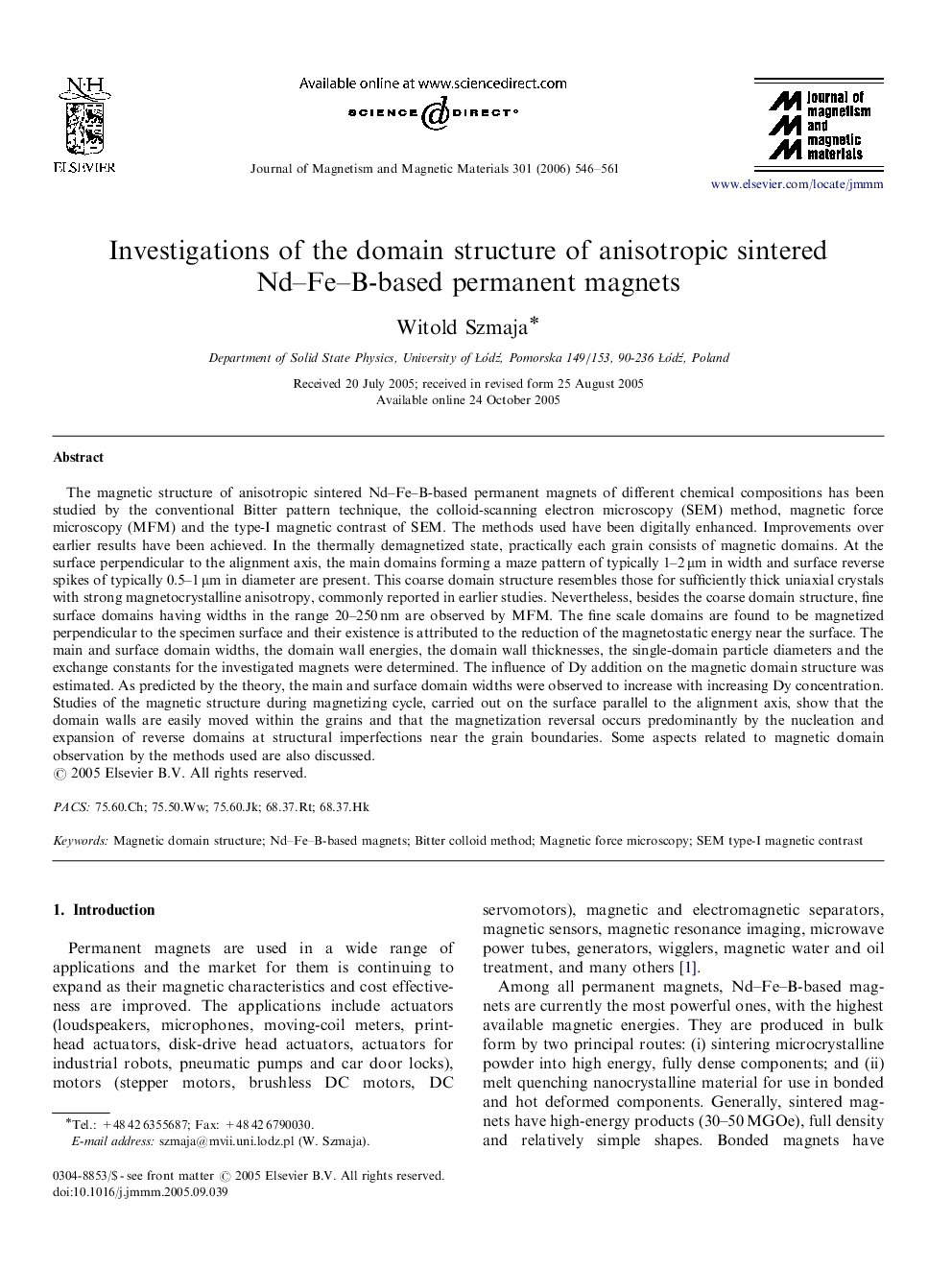| کد مقاله | کد نشریه | سال انتشار | مقاله انگلیسی | نسخه تمام متن |
|---|---|---|---|---|
| 1805576 | 1024689 | 2006 | 16 صفحه PDF | دانلود رایگان |

The magnetic structure of anisotropic sintered Nd–Fe–B-based permanent magnets of different chemical compositions has been studied by the conventional Bitter pattern technique, the colloid-scanning electron microscopy (SEM) method, magnetic force microscopy (MFM) and the type-I magnetic contrast of SEM. The methods used have been digitally enhanced. Improvements over earlier results have been achieved. In the thermally demagnetized state, practically each grain consists of magnetic domains. At the surface perpendicular to the alignment axis, the main domains forming a maze pattern of typically 1–2 μm in width and surface reverse spikes of typically 0.5–1 μm in diameter are present. This coarse domain structure resembles those for sufficiently thick uniaxial crystals with strong magnetocrystalline anisotropy, commonly reported in earlier studies. Nevertheless, besides the coarse domain structure, fine surface domains having widths in the range 20–250 nm are observed by MFM. The fine scale domains are found to be magnetized perpendicular to the specimen surface and their existence is attributed to the reduction of the magnetostatic energy near the surface. The main and surface domain widths, the domain wall energies, the domain wall thicknesses, the single-domain particle diameters and the exchange constants for the investigated magnets were determined. The influence of Dy addition on the magnetic domain structure was estimated. As predicted by the theory, the main and surface domain widths were observed to increase with increasing Dy concentration. Studies of the magnetic structure during magnetizing cycle, carried out on the surface parallel to the alignment axis, show that the domain walls are easily moved within the grains and that the magnetization reversal occurs predominantly by the nucleation and expansion of reverse domains at structural imperfections near the grain boundaries. Some aspects related to magnetic domain observation by the methods used are also discussed.
Journal: Journal of Magnetism and Magnetic Materials - Volume 301, Issue 2, June 2006, Pages 546–561